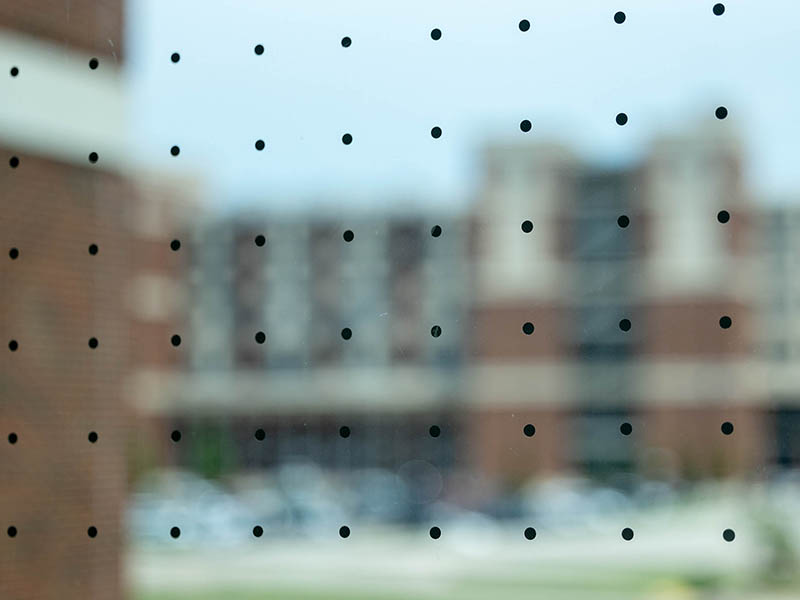
Oklahoma State University changes infrastructure to protect wildlife
Monday, August 14, 2023
Media Contact: Alisa Boswell-Gore | Office of Communications & Marketing, OSU Agriculture | 405-744-7115 | alisa.gore@okstate.edu
Oklahoma State University is now one of the first major research universities in the U.S. to prioritize the reduction of bird-window collisions with the completion of a $118,000 project.
“Advancing on past research on the bird-window collision issue, we began intensive research here at OSU, identifying characteristics of buildings and their surroundings that lead to high numbers of collisions, as well as identifying particular times of the year when we see more of these collisions happening,” said Dr. Scott Loss, professor in the Department of Natural Resource Ecology and Management.
Loss and collaborators estimate that windows are the largest source of bird collision
mortality in North America, killing up to a billion birds annually in the U.S. alone
and affecting more than 300 species.
Former graduate student Corey Riding conducted collision surveys at 17 OSU buildings from April 2015 to October 2017. It was determined that the Noble Research Center and the Gallagher-Iba Arena were the two most dangerous OSU buildings for bird collisions.
“We often associate bird collisions with big city skyscrapers, but more birds are dying at smaller buildings in communities all over the country,” said Dr. Tim O’Connell, associate professor in the Department of Natural Resource Ecology and Management. “Corey’s work helped us determine which buildings on campus were killing the most birds and what parts of those buildings were most dangerous.”
The university recently finished installing Feather Friendly window markers on the two buildings, which are small white dots placed in 2-inch x 2-inch increments to let birds know there is an object. A previous study at OSU bus shelters treated with the same markers estimated they reduced collisions by 64%.
Moving forward, OSU graduate student Riley Lawson will track bird collisions at buildings with and without the markers to evaluate the effectiveness of these markers.
“I think this project is just one of many examples of how OSU and the Department of Natural Resource Ecology and Management are really pioneering research like this in so many ways, especially with wildlife and environmental conservation techniques,” Lawson said of the window marker project. “There are few other institutions that have committed to this type of project on such a huge scale. I think it shows how unique OSU is in its commitment to helping conserve bird populations.”
The following experts are available for interviews on bird-window collisions, related research and preventative measures:
- Dr. Scott Loss, professor in the OSU Department of Natural Resource Ecology and Management.
- Dr. Tim O’Connell, associate professor in the OSU Department of Natural Resource Ecology and Management.
For information on bird collision prevention, visit the websites of the Cornell Lab of Ornithology, American Bird Conservancy and the National Audubon Society for information on how to reduce bird collisions around homes and communities.
